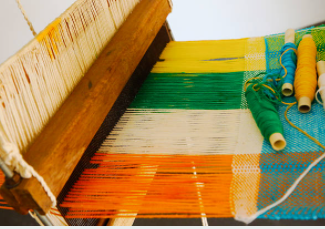

Manufacturing exotic garments with minimal error is a dream of every fashion designer, and what makes this dream come true is the practical skill of pattern making. Not everyone can effectively master this skill. It requires a lot of time and effort to master it, and those who do are professionals. The designers, who have no idea regarding fabric patterns, can get easy assistance with the available resources and the professionals.
JD Institute of Fashion Technology filters the designing requirements. It makes their students interact and get assistance under the top fashion designers for a better approach and understanding of their subjects right from the initial days.
Pattern making refers to a specific design and creation of the templates, which helps sew clothing and craft items in proper shapes. Eventually, patterns are small paper cuttings that initiate the fabric’s cutting into different shapes and sew those cuttings to form a complete garment.
Pattern-making at home isn’t great, but you must be an experienced sewer. Otherwise, you can purchase the ready-made patterns and create your designs easily at your dwelling.
There are three methods involved in pattern making.
Drafting is an ideal way of forming fundamental or foundational design patterns. It generally includes numerous measurements generated from size methods and precise measurements performed on an individual, outfit, or body shape. To finalize the pattern making, measurements for the chest, waist, hips, and so on are marked on paper, and construction lines are drawn.
Flat paper pattern making involves the creation of basic fitted patterns with comfort easiness that is ready to fit a person or body form. In this process, the sloper is the beginning point for creating flat patterns and is a straightforward pattern that is ready to fit the body with just enough wiggle room for movement and comfort.
However, because fashion changes so frequently, women’s fashions shift as well. However, when it comes to a woman’s clothes, there is an involvement of five fundamental pattern elements. They have a fitted bodice front and back with darts, a basic neckline, a sleeve, and a fitted skirt front and back. These fundamental slopers are then tweaked to produce tones.
Draping is a muslin transferred to paper to be used as a final pattern in cloth designing. It entails wrapping a two-dimensional piece of fabric around a form and adhering to its shape to create a 3D fabric pattern. To make the clothing more pleasant to wear, movement allowances are added. The designer can see the entire design effect of the finished garment on the body form before the garment component is cut and sewed, which is an advantage of draping. However, it is more expensive and time-consuming than producing a flat pattern.
Pattern making is one of the essential parts of the process of fashion designing. It helps the designers prepare different kinds of garments in further cuts and designs. This design can be interpreted through pattern making, making it easy for the designers to understand the technical ability and easy for them to have a follow-up. Further, pattern making helps in any garment’s fundamental development. If the patterns are significant, they can easily be used to create different designs per the client’s requirement. But the measurements should be perfect as well. Otherwise, no client or customer would wish to buy that piece and waste a handsome amount on it.
But most importantly, the thing to be considered is that patterns are an essential source for a garment’s development. It is a necessary requirement for the development of a garment. So, being a fashion or a dress designer, it is needed to learn about Pattern making in detail. But how to go for pattern making?
Pattern making is easy if someone is dedicated to learning about it. However, many fashion designing courses include Pattern-making technology as their integral element.
There are numerous colleges, universities, and private institutes that offer fashion designing courses, usually a diploma program of one year. However, the eligibility criteria to enter this field is 10 plus 2, while some institutes prefer to execute their own entrance exam.
A fashion designing study concentrates on the art of integrating design and aesthetics. It covers all of the expertise necessary to make a costume. It gathers all the skills and entails the essential learning about using a sewing machine and designing multiple kinds of outfits such as Kurtas, Skirts, Blouses, Collars, Sleeves, Sarees, and many others in the minds of the young aspirants.
While looking forward, the diploma in fashion designing is a shorter course than a fully-fledged designing course, but it teaches certain necessary competencies to become a professional clothing designer. People taking this course usually would like to work as a stylist, costume designer, create their own boutique, or be a fashion designer. However, this fashion designing course is eventually appropriate for students who have a firm sense of what they want to achieve.
Not all institutes ensure the study of Pattern making in their curriculum. One curriculum is BSC in Fashion Designing, which follows all the trends and related technical expertise regarding designing specific garments. However, the JD Institute of Fashion Technology offers comprehensive research and practical pattern-making knowledge in their specialized courses.